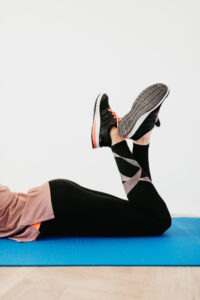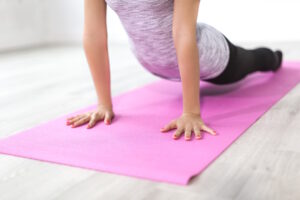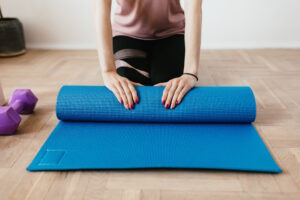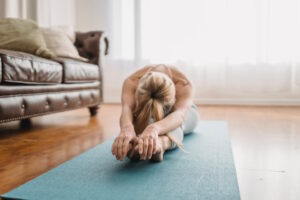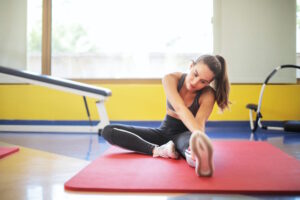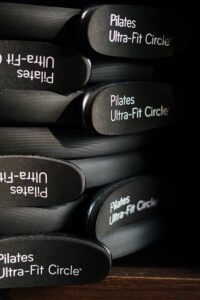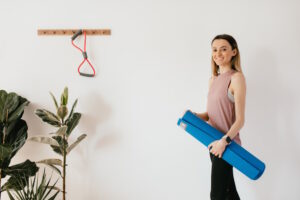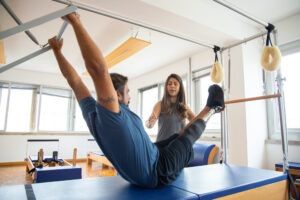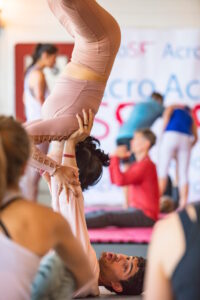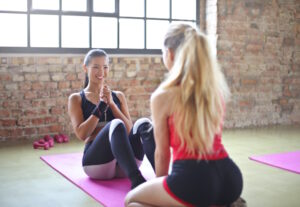
Choosing the right Pilates instructor is essential for beginners to establish a strong foundation, learn proper technique, and ensure a safe and effective Pilates practice. With a multitude of instructors available, it can be overwhelming to make the right choice. However, by considering certain factors and asking relevant questions, beginners can find a knowledgeable and experienced Pilates instructor who aligns with their goals and needs. In this comprehensive guide, we will explore how to choose the right Pilates instructor for beginners, providing insights and tips to help you make an informed decision.
What are the qualities of a good Pilates instructor?
A good Pilates instructor possesses specific qualities that contribute to an effective and fulfilling learning experience for beginners. Look for the following qualities when choosing a Pilates instructor:
1. Qualifications and Certification: A good Pilates instructor should have appropriate certifications from recognized training programs. They should have completed comprehensive training in Pilates methodology, anatomy, and teaching techniques. Check for certifications from reputable organizations, such as Balanced Body, STOTT PILATES, or the Pilates Method Alliance (PMA).
2. Experience and Expertise: Consider the instructor’s level of experience and expertise. An experienced instructor has a deep understanding of Pilates principles, can provide appropriate modifications for different fitness levels and abilities, and possesses the knowledge to address individual needs or limitations.
3. Clear Communication and Instruction: Look for an instructor who can clearly communicate Pilates concepts and instructions. They should be able to guide you through exercises, explain proper alignment, and provide cues for engaging specific muscles. Clear communication is crucial for understanding and executing Pilates techniques correctly.
4. Adaptability and Individualization: A good instructor recognizes that each individual is unique and may have different needs or limitations. They should be able to adapt exercises and provide modifications based on your specific requirements, ensuring a safe and tailored Pilates experience.
5. Encouraging and Supportive: A positive and supportive instructor creates a comfortable learning environment. They provide encouragement, constructive feedback, and motivation, helping beginners build confidence and enjoy their Pilates journey.
How do I know if Pilates is right for me?
Pilates can be beneficial for a wide range of individuals, but it’s important to consider if it aligns with your goals, preferences, and physical condition. Here are some factors to help you determine if Pilates is right for you:
1. Fitness Goals: Assess whether Pilates aligns with your fitness goals. Pilates focuses on core strength, flexibility, posture, and mind-body connection. If these aspects resonate with your goals, Pilates can be a suitable choice.
2. Physical Condition: Pilates is generally safe for most individuals, but it’s important to consider any existing injuries or medical conditions. Consult with your healthcare provider or a qualified Pilates instructor to determine if modifications or specific exercises are needed to accommodate your condition.
3. Personal Preferences: Consider your personal preferences in terms of exercise style, atmosphere, and group versus individual sessions. Pilates offers various formats, including group classes, private sessions, or online platforms. Choose an approach that suits your preferences and encourages your commitment to regular practice.
What is beginner Pilates called?
Beginner Pilates is often referred to as “mat Pilates” or “Pilates mat work.” It focuses on practicing Pilates exercises on a mat without the use of specialized equipment. Mat Pilates is an accessible and cost-effective way for beginners to learn the foundational principles and basic exercises of Pilates.
What should I take to my first Pilates class?
To prepare for your first Pilates class, consider bringing the following:
1. Comfortable Clothing: Wear form-fitting, breathable clothing that allows for a full range of movement. Avoid clothing with zippers, buttons, or anything that may cause discomfort while lying or stretching on the mat.
2. Pilates Mat: If you have your own Pilates mat, bring it to the class. However, most studios provide mats for communal use.
3. Towel and Water Bottle: Pilates sessions can be physically challenging, so bring a towel to wipe off any perspiration and a water bottle to stay hydrated.
4. Grip Socks: Some individuals prefer wearing grip socks to enhance stability and prevent slipping on the mat. Check with your instructor or studio if grip socks are recommended or required.
5. Open Mind and Positive Attitude: Approach your first Pilates class with an open mind and a positive attitude. Be ready to learn, ask questions, and enjoy the process of discovering Pilates.
In this comprehensive guide on how to choose the right Pilates instructor for beginners, we explored the qualities of a good Pilates instructor, including qualifications, experience, communication skills, adaptability, and supportiveness. We discussed factors to consider when determining if Pilates is right for you, such as fitness goals, physical condition, and personal preferences. Additionally, we clarified that beginner Pilates is often referred to as “mat Pilates” or “Pilates mat work,” focusing on exercises performed on a mat. Lastly, we provided guidance on what to take to your first Pilates class, emphasizing comfortable clothing, a Pilates mat (if available), towel, water bottle, grip socks, and an open mind. By considering these factors and making an informed decision, beginners can find a qualified Pilates instructor who will guide them in establishing a strong foundation and achieving their fitness goals through the practice of Pilates.
